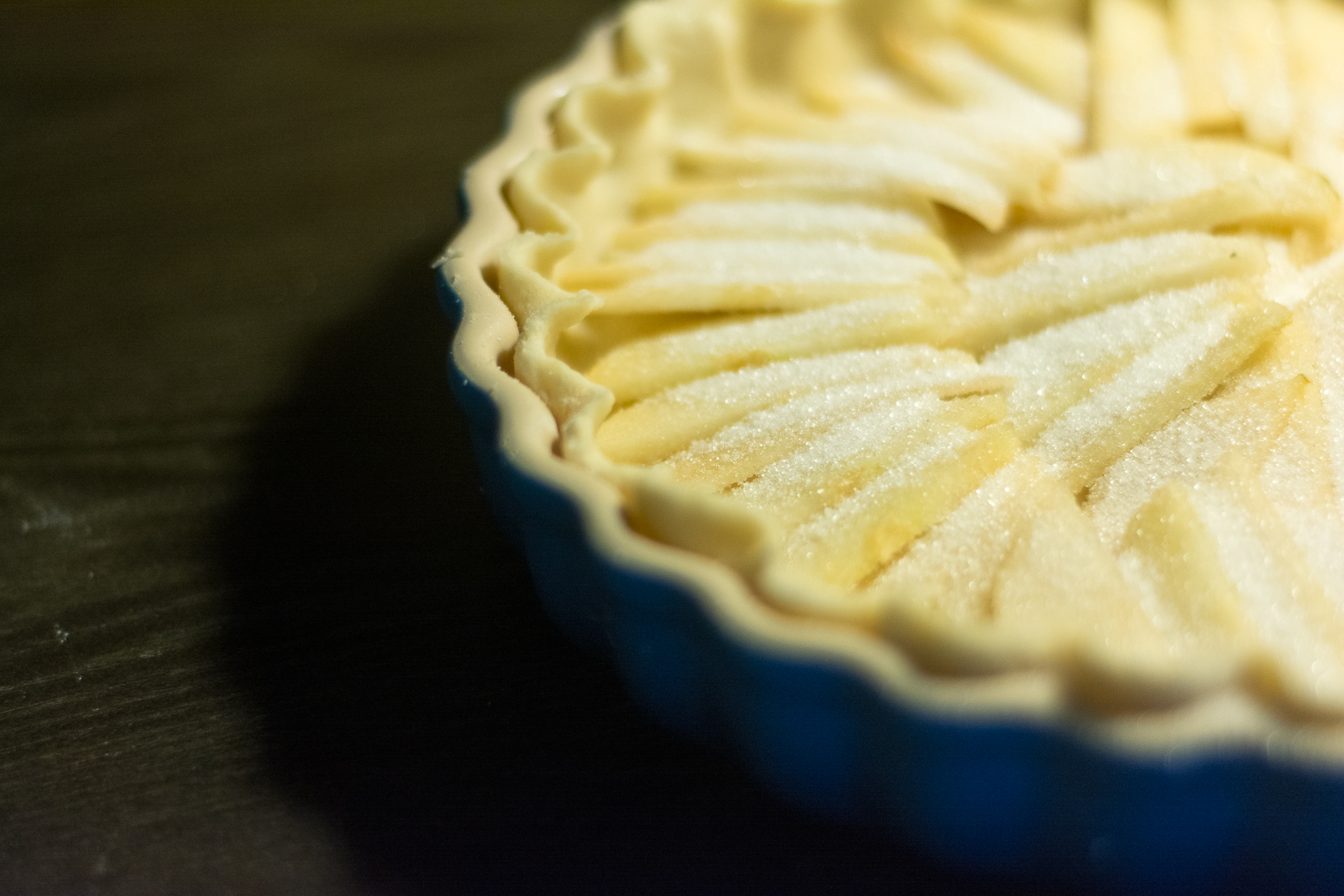The following is a post from an old side-project of mine in which I fancied myself a food blogger. I adore cooking for people, and the site may have its renaissance one day.
I recently learned that pears, unlike apples, are not ready to eat when you pick them from a tree. Pears, when harvested correctly, are picked and then ripen to perfection off the tree (probably in a bowl or basket on your counter).
David Sugar, who studies fruit physiology at Oregon State University’s Southern Oregon Research and Extension Center in Central Point, explains:
“Unlike apples, which are ready to eat from the day they are picked, pears must go through a series of changes before they can deliver their full splendor. Pears do not ripen on the tree to our liking. If allowed to tree-ripen, pears typically ripen from the inside out, so that the center is mushy by the time the outside flesh is ready.”
Pears picked when slightly immature will ripen with better quality than pears that are over mature when picked. To tell if a pear is mature, a general rule of thumb is that, while still on the tree, most mature, ready to ripen pears will usually detach when “tilted” to a horizontal position from their usual vertical hanging position. Bosc pears always are difficult to separate from the spur. (http://extension.oregonstate.edu/gardening/node/413)
So you’ll understand my confusion, at first, when I found about a dozen unripe pears that had dropped onto the ground but were still rock hard. I even tried to eat one, but only got a few bites in before tossing it. The flesh and skin was mildly sweet, but quickly turned into a chunky, tasteless paste in my mouth. Blech.
I should mention here that the pear tree isn’t mine. Rebecca and I are house sitting this week for a lovely couple who own a house on James Island Creek. There’s a little dock with access to the tidal creek, sitting areas to enjoy the breeze, and a pear tree. I’m not a pear expert, but these appear to be Forelle pears, known for their red-spotted skin and firm, almost apple-like texture.
Hoping that perhaps being subjected to 400 degree heat in a bath of hot custard for an hour would soften them, I decided to use the unripe pears anyway. Waiting for them to ripen just seemed… like a long time to wait for pie. Who likes waiting a week for pie?
Not me, as you’ve probably guessed. Unfortunately, not even a hour in the oven could make the thinly sliced sections of pear tender and soft. But it didn’t really matter, because the cream and sugar and flour make a delicious custard filling, delightfully suspending the fruit. Yes, if I had waited for ripe pears it would have been better, but even with unripe fruit it was fantastic. You could probably make the same pie with apples or peaches with excellent, bathed-in-custard results.
Nelson Pear Pie
Adapted from the Drummond Ranch Pie Party Recipe, saveur.com
Ingredients
Crust:
1.5 cups flour
1 tsp. kosher salt
7 tbsp. unsalted butter, cubed and chilled
1⁄4 cup ice-cold water
Filling:
3 tbsp. flour, plus more for dusting
5 large ripe pears (peeled, cored, and thinly sliced)
3⁄4 cup sugar
1 cup heavy cream
Make the Crust
Pulse flour, salt, and butter in a food processor into pea-size crumbles. Slowly add water; pulse until dough comes together; try not to over mix. Flatten into a disk. Wrap in plastic wrap and chill 1 hour before using.
Make the Filling
While the crust chills, peel, core, and slice pears and place in a large bowl.
On a lightly floured surface, roll dough into a 12″ round. Fit into a 9-inch pie plate or tart pan. Trim edges and crimp; chill for at least 30 minutes. Do not skip this step.
Heat oven to 400°F. Fan 1/3 the pears evenly over dough. Sprinkle 1/3 each of sugar and flour over pears and drizzle with 1/3 of the cream. Repeat with 2 more layers of pears, sugar, flour, and cream. Bake until crust is golden and filling is set, about 1 hour. Let cool before serving, 20-30 minutes.
Serve with ice cream, whipped cream, or straight-up.
It is worth noting that to some dogs, Forelle pears look a lot like tennis balls, and therefore make great chasing and chewing toys for cute pit bulls (and other breeds).













